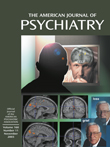In keeping with the book’s subtitle, the foreword by Peter C. Whybrow, M.D., refers to mania and depression as “disorders of the brain’s emotional gyroscope—that balancing bar that enables us to navigate the high-wire of the circus that is human society.” Pretty heady prose, but consistent with Lana Castle’s style of self-disclosure about her bipolar disorder, premenstrual syndrome, lupus, hypothyroidism, and substance abuse, as well as stressors including divorce, thefts, break-ins, two rapes (described rather graphically), and her sister’s suicide.
Castle provides a firsthand experience with the pleasures and perils of bipolar disorder and the struggles to bring it under control. She then expands to a comprehensive and generally understandable exposition on diagnosis, differential diagnosis, etiology, and treatment. Mental illness myths are confronted and dispelled, bad-parenting myths destroyed, and great efforts made to destigmatize the illness. Cogent advice is provided about getting help and providing help.
The treatment sections range from medical treatments (medications, ECT, transcranial magnetic stimulation, and vagus nerve stimulation) to psychotherapies, alternative and complementary approaches, and lifestyle adjustments such as exercise and nutrition. From my perspective, delving into spirituality and transcendence, creative/expressive therapies, self-actualization, and the like goes a bit afield from bipolar disorder itself, but lay readers may feel otherwise.
On the downside, the book contains enough inconsistencies and inaccuracies to make me reluctant to provide a strong endorsement unless these are corrected in a second edition. For example, it is debatable whether bipolar II is a “milder form” of bipolar disorder given the potential severity of major depressive episodes. Here are a few more incorrect statements: Hypomania “may or may not include delusions or hallucinations” (p. 75). “When the adrenal glands don’t stimulate the pituitary gland to produce enough cortisol...” (p. 91). “Extending from the axon are multiple dendrites...” (p. 109). Monoamine oxidase destroys “neurotransmitters remaining in the synaptic cleft” (p. 112). “Blood vessel dilation, causing paleness of the skin” (p. 114). Psychopharmacologists “hold doctoral degrees, usually in psychology or pharmacology” (p. 188).
The medications appendix should be cleansed of errors such as propranolol listed as a monoamine oxidase inhibitor, a Wellbutrin daily dose of 200–600 mg, reboxetine as a selective serotonin and norepinephrine reuptake inhibitor, carbamazepine blood levels of 10–13 mg/ml, valproic acid levels of 44.6–126 g/ml, NaSSAs defined as “noradrenergic and specific serotonergic receptors,” and “not applicable” and “varies widely” statements about half-life.
These comments may seem needlessly picky, but they are in keeping with the intent of the author and publisher to “ensure that the information presented is accurate and up-to-date.” All in all, I found it to be a rather decent book, but one in need of polish.

